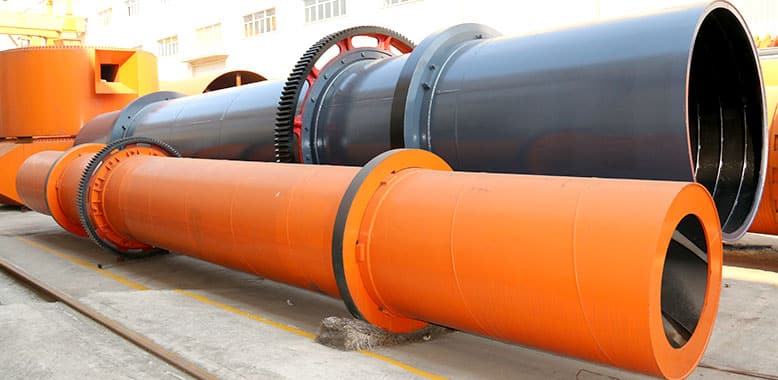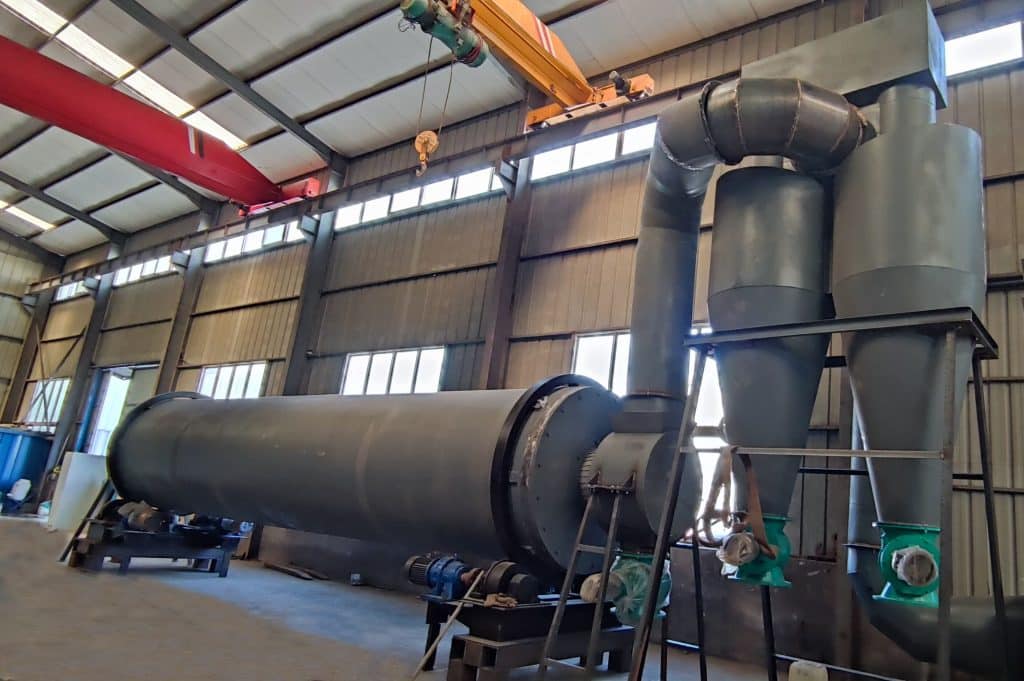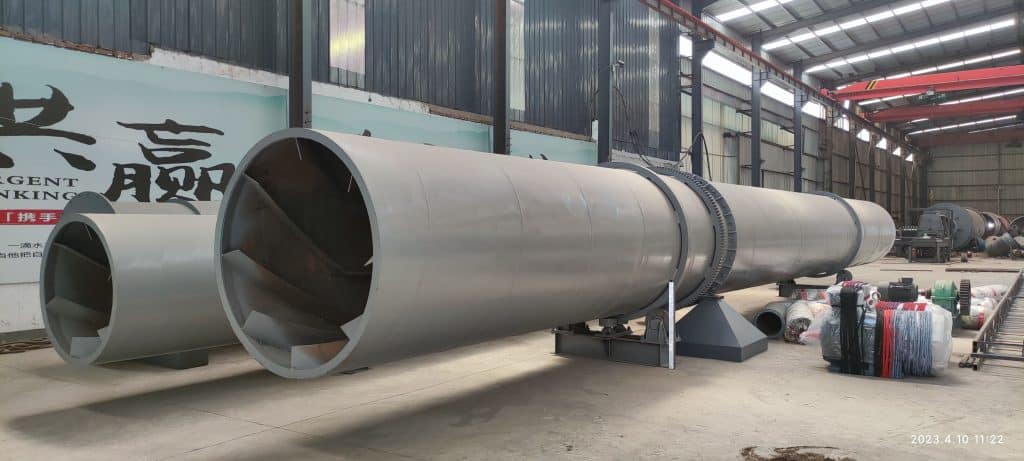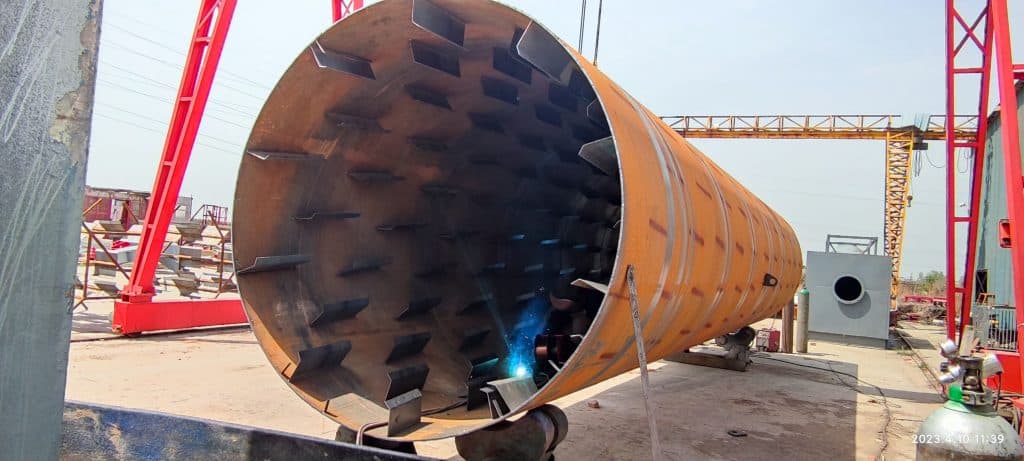
The rotary drum dryer is widely used in various industries and has a profound use and application in all industries. But when it comes to choosing the one you need, there exists confusion about which one to choose.
To make this selection process easier for you, we have compiled a comparison bog guide of the triple vs single pass rotary drum dryer, so without any delay in the process, let’s start!
Single-pass rotary drum dryer
As the name of the drum dryer suggests, it uses a single pass to do the drying process. It is designed such that it is capable of drying the materials by a single pass from the drying chamber. It is a simple yet effective dryer when it comes to drying, and therefore, it is suitable for various industries.
Working principle
First, there is a feeding chamber in the working principle of the single-pass rotary drum dryer. It is where the raw material/feed enters the dryer. The feed is mostly wet as it is to be dried. The feed can be anything from chemicals to agricultural products.
After the feeding chamber, we have the drying chamber. In the drying chamber, the material interacts with the hot air currents. These hot air currents are capable of drying the material.
This contact initiates the drying. After the contact, the heat transfers to the wet material. The wet material starts to evaporate the water and begins to dry. The water vapors are expelled from the dryer through an exhaust system attached to the dryer.
As these fumes are eliminated, the dampness is constantly removed from the framework, consequently drying the feed. When the item is dried, it goes to the end of the drying chamber and, from that point, is released.
Triple-pass rotary drum dryers
The triple-pass rotary drum dryer is another form of the rotary drum dryer, and it passes the material through three drums to increase the efficiency and the quality of the drying process. This multi-stage drying process increases the drying efficiency and reduces the energy consumption overall.

Working principle
This multi-stage drying process starts from feeding the dryer with the wet feed. Here, a variety of materials can be fed that need to be dried. After the material is fed to the instrument/equipment, the material goes to the first cylinder. Here, the material is presented to the hot air.
This hot air builds the feed’s temperature, and the feed’s dampness begins to encounter evaporation. And here, the first pass is done.

After the first pass, the material goes to the next outer cylinder; this is known as the intermediate pass as well. Here, in this process, the hot air comes to increase the drying process.
In these passes, the velocity and the temperature range are slowly increased, as these are the major things that affect the drying rate.
After the transitional pass, the material is then taken care of to the last pass, where the material experiences the hottest air, and this stage eliminates practically all the dampness from your feed.
During the time spent moving from one chamber to the next chamber, the dampness content is diminished, and after the ideal level is accomplished, the material is released from the dryer.
A comparative view of the pros and cons
Pros of single pass drum dryer
Talking about the pros of the single-pass drum dryer, we have
Simpler in usage
The single-pass drum dryer is a very simple and easy-to-use dryer. With only a single pass and less complexity in its working, the single-pass drum dryer is more useful for people who want simplicity and ease of usage.
Cost-effective
The single-pass drum dryer is a practical instrument in contrast with the triple-pass one in terms of cost. The triple pass drum dryer is the most recent innovation, so it is fairly costly in contrast with the triple pass one. Furthermore, if you are lacking in a spending plan and need a good instrument, then the single pass can seal the deal!
Suitable for some material
The single-pass drum dryer, compared to the triple one, is more suitable for materials requiring no multiple drying. So, if you want to dry the material that a single pass can dry, you must not waste money on the triple pass one.
Cons of the single pass drum dryer

Less efficient
Talking about the cons, we have the issue of less efficiency in comparison to the triple pass. Triple pass is more efficient when it comes to the removal of moisture.
Longer time to dry
The single pass is not suitable for all the materials; thus, the materials not suitable, like the one that needs multiple drying, require a longer time to dry.
Pros of triple pass rotary drum dryer
Talking about the pros of the triple pass rotary drum dryer, we have
Better efficiency
With the use of the three different passes through different chambers, the triple pass can increase the overall efficiency of moisture removal. With this modern technology use, you can get the desired quality of moisture removal, and hence, the product quality increases.
Cost saving in terms of process.
The use of the triple pass drying not only provides us with better efficiency and moisture removal but also gives the benefits of less cost on the overall process of drying in comparison to the single pass.
Quality control
In the triple-pass drum dryer, you can have more control over the product at all times. This control factor helps in the quality control of the final product better than the single-pass drum dryer.
Suitability to a variety of products
The use of the triple pass helps you deal with a variety of materials, unlike the single pass. You get to dry the material that needs more passes and is unable to be dried by the single-pass dryer.
Cons
Complexity and the cost
The one con of the triple pass drum dryer is the complexity of the structure and the usage of the triple pass drum dryer. And for its use you need training.
Apart from the complexity, the other thing which disturbs the users is the higher upfront cost as it is expensive compared to the single-pass rotary drum dryer.
